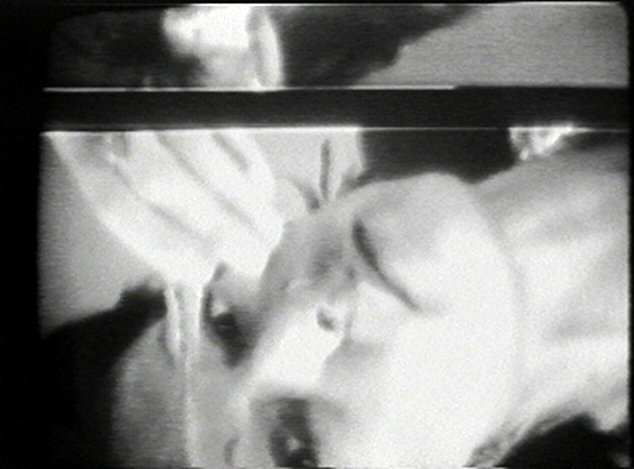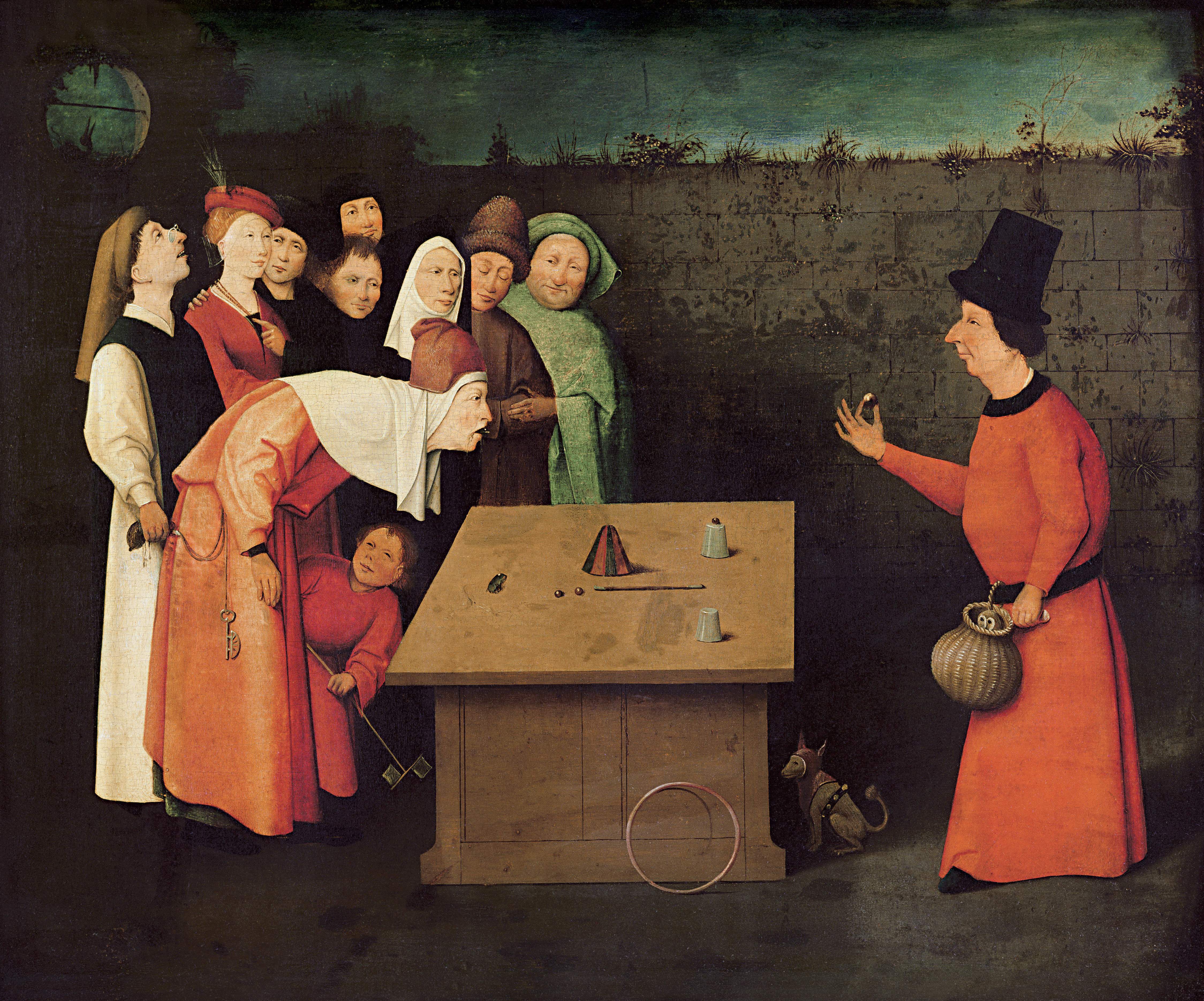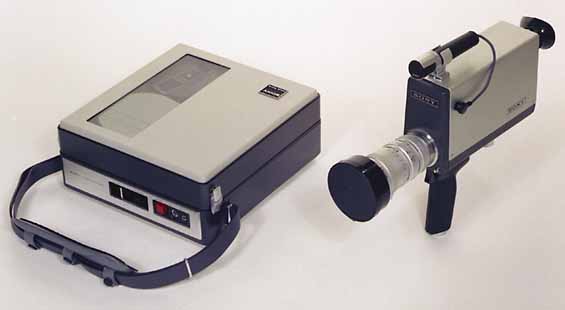|
Vertical Roll
''Vertical Roll'' is a 1972 video art piece by American video and performance artist Joan Jonas. It is a sequel to Jonas' first video work ''Organic Honey's Visual Telepathy''. Jonas' interfacing with the material grammar of video was significant to the late 1960s and early 1970s experimentation with new video technology. Among others, Steina and Woody Vasulka, Nam June Paik and Peter Campus also contributed to the emergent material discourse of video art. The video Shot in Ace Gallery Los Angeles, Vertical Roll features Jonas performing a series of actions under her alter-ego ''Organic Honey'', the belly dancer. The video was shot during one of the rehearsals for Jonas' ''Organic Honey'' performance, and while it is mostly based on the structure of a vertical roll it does contain some images from ''Visual Telepathy''. To Jonas the video offered a new means to approach perception and offer "multiple and simultaneous points of view". Vertical Roll provided Jonas a means to explore ... [...More Info...] [...Related Items...] OR: [Wikipedia] [Google] [Baidu] |
Joan Jonas Vertical Roll
Joan may refer to: People and fictional characters *Joan (given name), including a list of women, men and fictional characters *:Joan of Arc, a French military heroine *Joan (surname) Weather events *Tropical Storm Joan (other), multiple tropical cyclones are named Joan Music * ''Joan'' (album), a 1967 album by Joan Baez *"Joan", a song by The Art Bears from their 1978 album '' Hopes and Fears'' *"Joan", a song by Lene Lovich from her 1980 album ''Flex'' *"Joan", a song by Erasure from their 1991 album ''Chorus'' *"Joan", a song by The Innocence Mission from their 1991 album '' Umbrella'' *"Joan", a song by God Is My Co-Pilot from their 1992 album ''I Am Not This Body'' Other uses *Jōan (era), a Japanese era name * ''Joan'' (play), 2015 one-woman play written by Lucy J. Skillbeck *Joan Township, Ontario, a geographic township See also *''Jo-an'' tea house, National Treasure in Inuyama, Aichi Prefecture, Japan * *Jane (other) * Jean (other) *Jeanne ... [...More Info...] [...Related Items...] OR: [Wikipedia] [Google] [Baidu] |
University Of California, Berkeley
The University of California, Berkeley (UC Berkeley, Berkeley, Cal, or California) is a public land-grant research university in Berkeley, California. Established in 1868 as the University of California, it is the state's first land-grant university and the founding campus of the University of California system. Its fourteen colleges and schools offer over 350 degree programs and enroll some 31,800 undergraduate and 13,200 graduate students. Berkeley ranks among the world's top universities. A founding member of the Association of American Universities, Berkeley hosts many leading research institutes dedicated to science, engineering, and mathematics. The university founded and maintains close relationships with three national laboratories at Berkeley, Livermore and Los Alamos, and has played a prominent role in many scientific advances, from the Manhattan Project and the discovery of 16 chemical elements to breakthroughs in computer science and genomics. Berkeley is ... [...More Info...] [...Related Items...] OR: [Wikipedia] [Google] [Baidu] |
Jorge Luis Borges
Jorge Francisco Isidoro Luis Borges Acevedo (; ; 24 August 1899 – 14 June 1986) was an Argentine short-story writer, essayist, poet and translator, as well as a key figure in Spanish-language and international literature. His best-known books, ''Ficciones'' (''Fictions'') and '' El Aleph'' (''The Aleph''), published in the 1940s, are collections of short stories exploring themes of dreams, labyrinths, chance, infinity, archives, mirrors, fictional writers and mythology. Borges' works have contributed to philosophical literature and the fantasy genre, and majorly influenced the magic realist movement in 20th century Latin American literature.Theo L. D'Haen (1995) "Magical Realism and Postmodernism: Decentering Privileged Centers", in: Louis P. Zamora and Wendy B. Faris, ''Magical Realism: Theory, History and Community''. Duhan and London, Duke University Press, pp. 191–208. Born in Buenos Aires, Borges later moved with his family to Switzerland in 1914, where he studied ... [...More Info...] [...Related Items...] OR: [Wikipedia] [Google] [Baidu] |
The Garden Of Forking Paths
"The Garden of Forking Paths" (original Spanish title: "El jardín de senderos que se bifurcan") is a 1941 short story by Argentine writer and poet Jorge Luis Borges. It is the title story in the collection ''El jardín de senderos que se bifurcan'' (1941), which was republished in its entirety in ''Ficciones'' (''Fictions'') in 1944. It was the first of Borges's works to be translated into English by Anthony Boucher when it appeared in ''Ellery Queen's Mystery Magazine'' in August 1948. The story's theme has been said to foreshadow the many worlds interpretation of quantum mechanics. It may have been inspired by work of the philosopher and science fiction author Olaf Stapledon. Borges's vision of "forking paths" has been cited as inspiration by numerous new media scholars, in particular within the field of hypertext fiction.Wardrip-Fruin, Noah, and Nick Montfort, eds. ''The New Media Reader''. Cambridge: MIT Press, 2003. Other stories by Borges that express the idea of infinit ... [...More Info...] [...Related Items...] OR: [Wikipedia] [Google] [Baidu] |
Objectivity (philosophy)
In philosophy, objectivity is the concept of truth independent from individual subjectivity (bias caused by one's perception, emotions, or imagination). A proposition is considered to have objective truth when its truth conditions are met without bias caused by the mind of a sentient being. Scientific objectivity refers to the ability to judge without partiality or external influence. Objectivity in the moral framework calls for moral codes to be assessed based on the well-being of the people in the society that follow it. Moral objectivity also calls for moral codes to be compared to one another through a set of universal facts and not through subjectivity. Objectivity of knowledge Plato considered geometry to be a condition of idealism concerned with universal truth. In ''Republic'', Socrates opposes the sophist Thrasymachus's relativistic account of justice, and argues that justice is mathematical in its conceptual structure, and that ethics was therefore a precise and objec ... [...More Info...] [...Related Items...] OR: [Wikipedia] [Google] [Baidu] |
Sensory Analysis
Sensory analysis (or sensory evaluation) is a science, scientific discipline that applies principles of experimental design and statistical analysis to the use of human senses (visual perception, sight, olfaction, smell, taste, touch and Hearing (sense), hearing) for the purposes of evaluating consumer products. The discipline requires panels of human assessors, on whom the products are tested, and recording the responses made by them. By applying statistical techniques to the results it is possible to make inferences and insights about the products under test. Most large consumer goods companies have departments dedicated to sensory analysis. Sensory analysis can mainly be broken down into three sub-sections: * Analytical testing (dealing with objective facts about products) * Affective testing (dealing with subjective facts such as preferences) * Perception (the biochemical and psychological aspects of sensation) Analytical testing This type of testing is concerned with obtain ... [...More Info...] [...Related Items...] OR: [Wikipedia] [Google] [Baidu] |
Electronic Arts Intermix
Electronic Arts Intermix (EAI) is a nonprofit arts organization that is a resource for video and media art. An advocate of media art and artists since 1971, EAI's core program is the distribution and preservation of a collection of over 3,500 new and historical video works by artists. EAI has supported the creation, exhibition, distribution and preservation of video art, and more recently, digital art projects. EAI supports artists through the distribution, preservation, exhibition and representation of their media artworks, and works closely with educators, curators, programmers and collectors to facilitate exhibitions, acquisitions and educational uses of media artworks. EAI provides access to video art within an educational and cultural framework. History EAI was founded in 1971 as one of the first nonprofit organizations in the United States dedicated to the support of video as an art form. As one of the earliest organizations in the emergent video art movement, EAI was cre ... [...More Info...] [...Related Items...] OR: [Wikipedia] [Google] [Baidu] |
Feminist Film Theory
Feminist film theory is a theoretical film criticism derived from feminist politics and feminist theory influenced by Second Wave Feminism and brought about around the 1970s in the United States. With the advancements in film throughout the years feminist film theory has developed and changed to analyse the current ways of film and also go back to analyse films past. Feminists have many approaches to cinema analysis, regarding the film elements analyzed and their theoretical underpinnings. History The development of feminist film theory was influenced by second wave feminism and women's studies in the 1960s and 1970s. Initially in the United States in the early 1970s feminist film theory was generally based on sociological theory and focused on the function of female characters in film narratives or genres. Feminist film theory, such as Marjorie Rosen's '' Popcorn Venus: Women, Movies, and the American Dream'' (1973) and Molly Haskell’s ''From Reverence to Rape: The Treatment ... [...More Info...] [...Related Items...] OR: [Wikipedia] [Google] [Baidu] |
Gaze
In critical theory, sociology, and psychoanalysis, the gaze (French ''le regard''), in the philosophical and figurative sense, is an individual's (or a group's) awareness and perception of other individuals, other groups, or oneself. The concept and the social applications of the gaze have been defined and explained by existentialist and phenomenologist philosophers. Jean-Paul Sartre described the gaze (or "the look") in ''Being and Nothingness'' (1943). Michel Foucault, in '' Discipline and Punish: The Birth of the Prison'' (1975), developed the concept of the gaze to illustrate the dynamics of socio-political power relations and the social dynamics of society's mechanisms of discipline. Jacques Derrida, in ''The Animal that Therefore I Am (More to Come)'' (1997), elaborated upon the inter-species relations that exist among human beings and other animals, which are established by way of the gaze. Psychoanalysis In Lacanian psychoanalytic theory, Lacan's view on the gaze change ... [...More Info...] [...Related Items...] OR: [Wikipedia] [Google] [Baidu] |
University Of Michigan
, mottoeng = "Arts, Knowledge, Truth" , former_names = Catholepistemiad, or University of Michigania (1817–1821) , budget = $10.3 billion (2021) , endowment = $17 billion (2021)As of October 25, 2021. , president = Santa Ono , provost = Laurie McCauley , established = , type = Public research university , academic_affiliations = , students = 48,090 (2021) , undergrad = 31,329 (2021) , postgrad = 16,578 (2021) , administrative_staff = 18,986 (2014) , faculty = 6,771 (2014) , city = Ann Arbor , state = Michigan , country = United States , coor = , campus = Midsize City, Total: , including arboretum , colors = Maize & Blue , nickname = Wolverines , sporti ... [...More Info...] [...Related Items...] OR: [Wikipedia] [Google] [Baidu] |
Video Art
Video art is an art form which relies on using video technology as a visual and audio medium. Video art emerged during the late 1960s as new consumer video technology such as video tape recorders became available outside corporate broadcasting. Video art can take many forms: recordings that are broadcast; installations viewed in galleries or museums; works streamed online, distributed as video tapes, or DVDs; and performances which may incorporate one or more television sets, video monitors, and projections, displaying live or recorded images and sounds. Video art is named for the original analog video tape, which was the most commonly used recording technology in much of the form history into the 1990s. With the advent of digital recording equipment, many artists began to explore digital technology as a new way of expression. One of the key differences between video art and theatrical cinema is that video art does not necessarily rely on many of the conventions that define t ... [...More Info...] [...Related Items...] OR: [Wikipedia] [Google] [Baidu] |
Belly Dancer
Belly dance (Egyptian Arabic: رقص بلدي, translated: Dance of the Country/Folk Dance, romanized: Raks/Raas Baladi) is a dance that originates in Egypt. It features movements of the hips and torso. It has evolved to take many different forms depending on the country and region, both in costume and dance style; with the Egyptian styles and costumes being the most recognized worldwide due to Egyptian cinema. The Egyptian style with its traditional Egyptian rhymes is popular worldwide with many schools around the globe now practicing it. Names and terminology "Belly dance" is a translation of the French term ''danse du ventre''. The name first appeared in 1864 in a review of the Orientalist painting ''The Dance of the Almeh'' by Jean-Léon Gérôme. The first known use of the term "belly dance" in English is in reference to the Middle Eastern dancers who performed at the Exposition Universelle in Paris in 1893. The informal, social form of the dance is known as '' Raq ... [...More Info...] [...Related Items...] OR: [Wikipedia] [Google] [Baidu] |






.jpg)